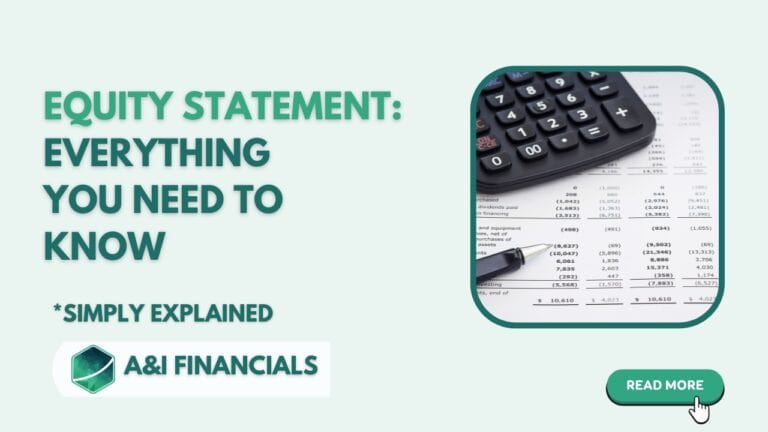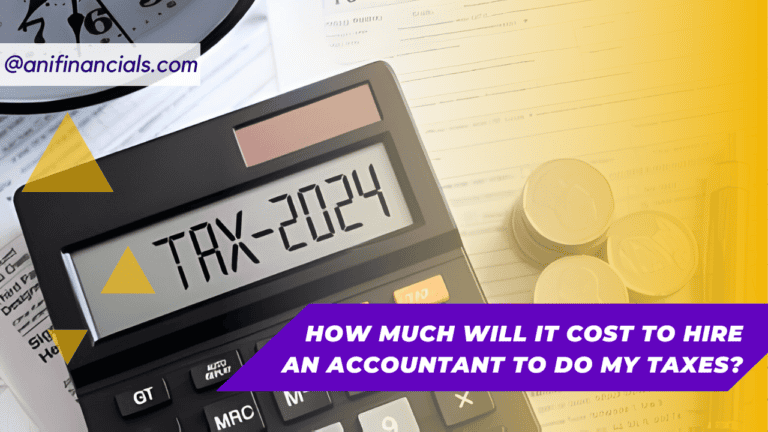Classified vs. Unclassified Balance Sheet: A Detailed Comparison
Introduction
Understanding balance sheets is crucial for managing finances. A balance sheet is a document that details a company’s assets, liabilities, and shareholders’ equity at a particular moment. Balance sheets can be categorized into two main types: classified and unclassified.
In this article we will explore the differences, uses, and benefits of both classified vs unclassified balance sheets, helping you understand which might be best for your needs.
What is a Classified Balance Sheet?
A classified balance sheet divides assets and liabilities into specific subcategories. This method provides a clear and structured view of a company’s financial position. Here’s how it works:
Structure of a Classified Balance Sheet
Assets
- Current Assets: Assets expected to be converted into cash within one year, such as cash, accounts receivable, and inventory.
- Non-Current Assets: Long-term investments not converted into cash within a year, like property, equipment, and long-term investments.
Liabilities
- Current Liabilities: Obligations to be settled within one year, including accounts payable and short-term debt.
- Non-Current Liabilities: Long-term financial obligations not due within the next year, such as long-term debt and bonds payable.
Shareholders’ Equity
- Common Stock: Investment made by shareholders in exchange for ownership in the company.
- Retained Earnings: Cumulative profits retained and reinvested in the business rather than distributed as dividends.
Benefits of a Classified Balance Sheet
- Clarity: Separates short-term and long-term items, making it easy to assess liquidity. By categorizing assets and liabilities, it provides a clear picture of the company’s ability to meet its short-term obligations and long-term financial health.
- Detailed Analysis: Offers a more in-depth look at financial health. The detailed breakdown of assets and liabilities helps stakeholders analyze the company’s financial position, performance, and stability.
- Better Decision Making: Helps investors and managers make informed decisions. The clarity and detail provided by a classified balance sheet enable better financial planning, risk assessment, and strategic decision-making.
Example of a Classified Balance Sheet
Imagine a small business, XYZ Corp., has the following items on its balance sheet:
- Current Assets: $50,000 in cash, $30,000 in inventory.
- Non-Current Assets: $100,000 in equipment, $50,000 in real estate.
- Current Liabilities: $20,000 in accounts payable, $10,000 in short-term loans.
- Non-Current Liabilities: $40,000 in long-term loans.
- Shareholders’ Equity: $160,000 (including retained earnings).
XYZ Corp’s classified balance sheet would clearly separate these items, offering a detailed view of its financial status.
What is an Unclassified Balance Sheet?
An unclassified balance sheet, also known as a simple balance sheet, does not categorize assets and liabilities. Instead, it lists them in a straightforward manner.
Structure of an Unclassified Format
- Assets
- Total Assets: Combined total of all assets. This figure represents the sum of all the company’s assets, including cash, accounts receivable, inventory, property, and equipment.
- Liabilities
- Total Liabilities: Combined total of all liabilities. This figure represents the sum of all the company’s financial obligations, including accounts payable, short-term debt, and long-term debt.
- Shareholders’ Equity
- Total Equity: Combined total of shareholders’ equity. This figure represents the sum of the company’s equity, including common stock and retained earnings.
Benefits of an Unclassified Balance Sheet
- Simplicity: Easier to prepare and understand for small businesses. An unclassified balance sheet presents financial information in a straightforward manner without the need for detailed categorization.
- Quick Overview: Provides a fast snapshot of financial status. It allows business owners and managers to quickly assess the company’s overall financial position without delving into specifics.
- Less Detail: Suitable for internal use where detailed analysis is not necessary. For small businesses with limited financial activity, an unclassified balance sheet is sufficient for internal management purposes.
Example of an Unclassified Balance Sheet
Using the same example of XYZ Corp., the unclassified balance sheet would look like this:
- Total Assets: $230,000.
- Total Liabilities: $70,000.
- Total Equity: $160,000.
This simple presentation gives a quick overview but lacks the detailed breakdown of a classified balance sheet.
Classified vs. Unclassified: Which to Choose?
When to Use a Classified Balance Sheet
- Large Businesses: With diverse assets and liabilities. Large companies with complex financial structures benefit from the detailed categorization of a classified balance sheet.
- External Reporting: Provides clarity for investors and creditors. A classified balance sheet meets the needs of external stakeholders by offering a clear and comprehensive view of the company’s financial health.
- Detailed Analysis: Required for financial decision-making and forecasting. The detailed information allows for in-depth financial analysis and future planning.
When to Use an Unclassified Balance Sheet
- Small Businesses: With fewer financial items. Small businesses with straightforward financial activities may find an unclassified balance sheet more practical.
- Internal Use: Quick reference for owners and managers. It serves as a quick and easy reference for business owners and managers to review the company’s financial status.
- Simplicity: When detailed breakdowns are unnecessary. For internal management purposes, an unclassified balance sheet provides sufficient information without the need for extensive details.
Detailed Comparison
Clarity and Detail
- Classified: Offers detailed insights into each financial category. It separates current and non-current assets and liabilities, providing a clear picture of the company’s financial position.
- Unclassified: Provides a general overview without specific details. It lists assets, liabilities, and equity in a straightforward manner without categorization.
Preparation Time
- Classified: Takes more time to prepare due to categorization. It requires detailed information and organization of financial items.
- Unclassified: Quicker and easier to prepare. It presents financial information without the need for detailed breakdowns.
Decision Making
- Classified: Better for making informed financial decisions. The detailed information helps in analyzing financial health and making strategic decisions.
- Unclassified: Useful for quick, high-level decisions. It provides a fast snapshot of financial status for quick decision-making.
Audience
- Classified: Ideal for external stakeholders like investors and banks. It meets the needs of external stakeholders who require detailed financial information.
- Unclassified: Best suited for internal management. It provides sufficient information for internal use without overwhelming details.
Advantages and Disadvantages
Advantages of Classified Balance Sheets
- Detailed Information: Helps in analyzing financial health. The detailed breakdown of assets and liabilities provides a comprehensive view of the company’s financial position.
- Better Forecasting: Assists in future financial planning. It enables accurate financial forecasting and planning for future growth.
- Investor Confidence: Provides transparency to investors. A classified balance sheet builds investor confidence by offering clear and detailed financial information.
Disadvantages of Classified Balance Sheets
- Time-Consuming: Requires more effort to prepare. It involves detailed categorization and organization of financial items.
- Complexity: May be too detailed for small businesses. Small businesses with straightforward financial activities may find it unnecessarily complex.
Advantages of Unclassified Balance Sheets
- Simplicity: Easy to prepare and understand. It presents financial information in a straightforward manner without detailed categorization.
- Quick Overview: Provides a fast snapshot of finances. It allows for a quick review of the company’s overall financial position.
- Less Time: Requires less effort and time to prepare. It simplifies the preparation process, saving time and effort.
Disadvantages of Unclassified Balance Sheets
- Lack of Detail: Not suitable for detailed financial analysis. It lacks the detailed breakdown needed for in-depth financial analysis.
- Limited Use: Less useful for external stakeholders. It does not provide the level of detail required by investors and creditors.
Conclusion
Understanding the differences between classified vs unclassified balance sheets is essential for managing your business’s finances. A classified balance sheet offers detailed insights and clarity, making it ideal for larger businesses and external reporting. An unclassified balance sheet, on the other hand, is simpler and quicker to prepare, suitable for small businesses and internal use. By choosing the right type of balance sheet, you can ensure better financial management and decision-making.
In summary:
- Classified Balance Sheet: Best for detailed analysis, external reporting, and larger businesses.
- Unclassified Balance Sheet: Ideal for simplicity, quick reference, and smaller businesses.
Final Thoughts
Balance sheets are fundamental tools in financial management. Whether you choose a classified or unclassified balance sheet, understanding their structure and benefits will help you make better financial decisions. Take the time to evaluate your business needs and select the balance sheet type that provides the best insights and clarity for your situation.
Remember, the goal is to have a clear, accurate representation of your financial status. This will not only help you manage your business better but also build trust with investors, creditors, and other stakeholders.For more information on classified balance sheet, you can read this comprehensive guide here:
Classified Balance sheet
FAQs on Classified vs Unclassified Balance Sheets
Classified balance sheets categorize assets and liabilities into subcategories, providing detailed insights. Unclassified balance sheets list them straightforwardly without categorization.
It offers detailed analysis and clarity, ideal for larger businesses, external reporting, and making informed financial decisions.
The unclassified option is simpler and quicker to prepare, suitable for small businesses and internal use where detailed analysis is not necessary.
By separating short-term and long-term items, it provides a clear picture of a company’s liquidity and financial health, aiding in better financial planning and risk assessment.
The unclassified option offers simplicity, a quick overview of financial status, and is easy to prepare, making it ideal for small businesses with straightforward financial activities.






